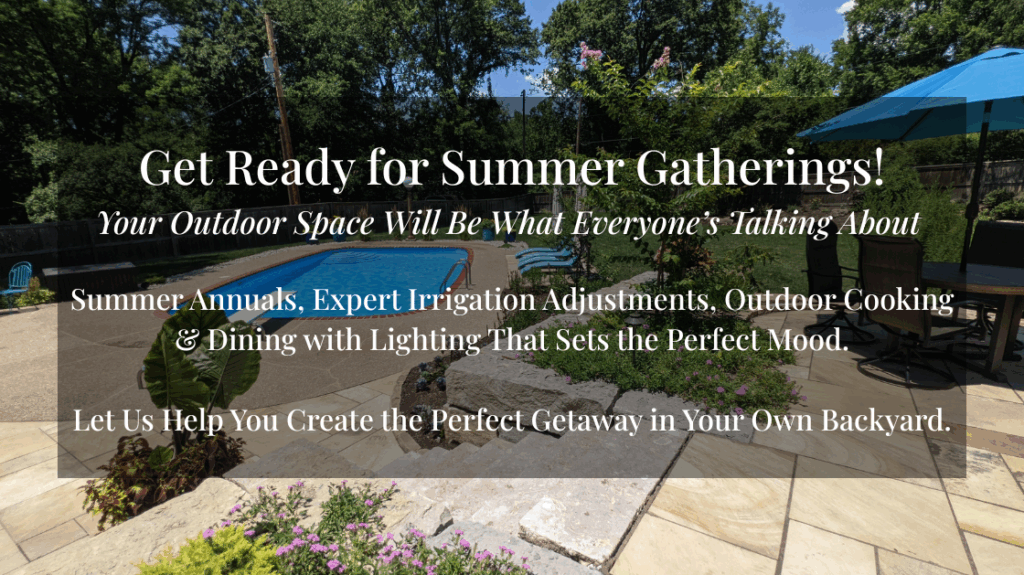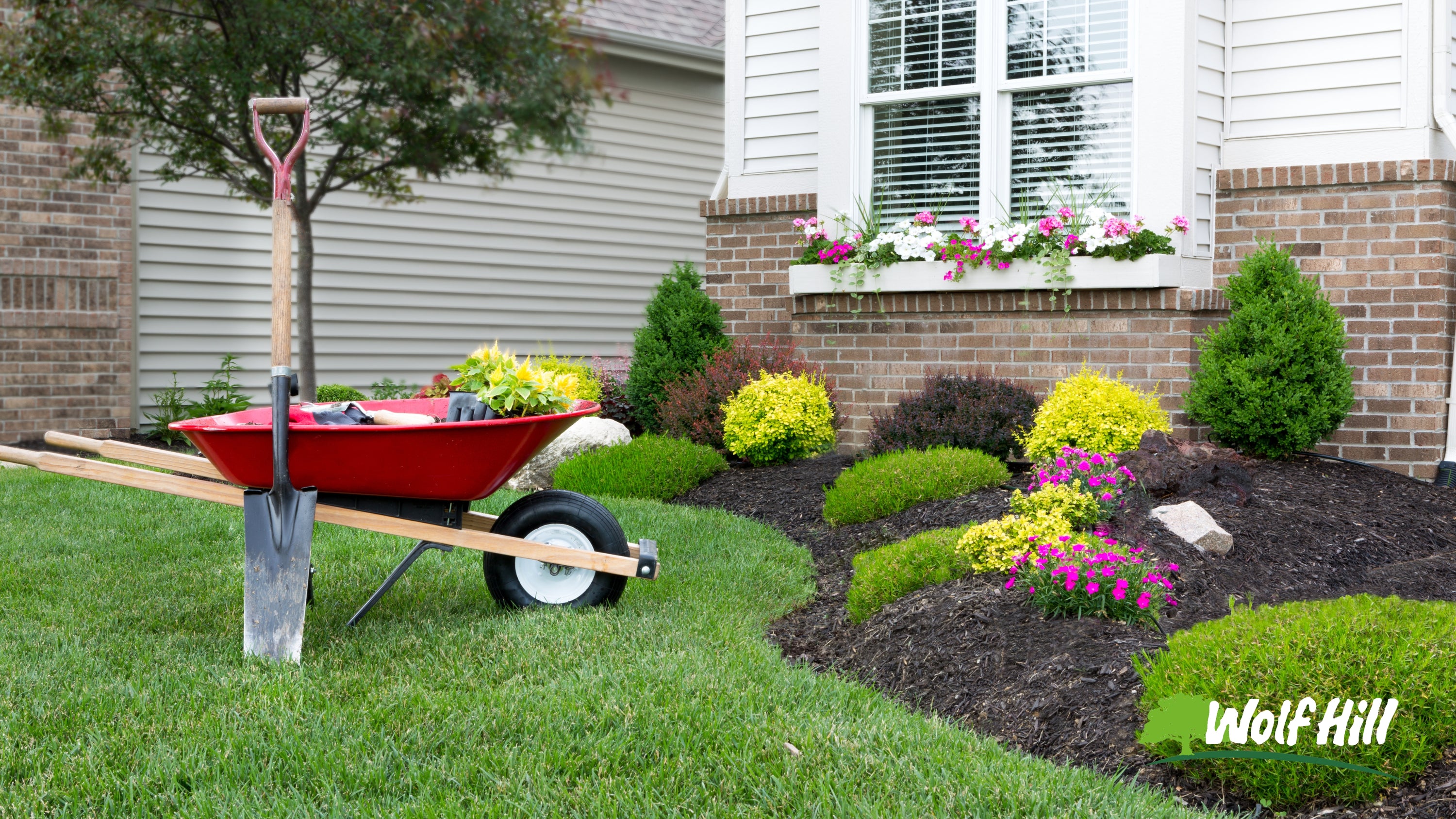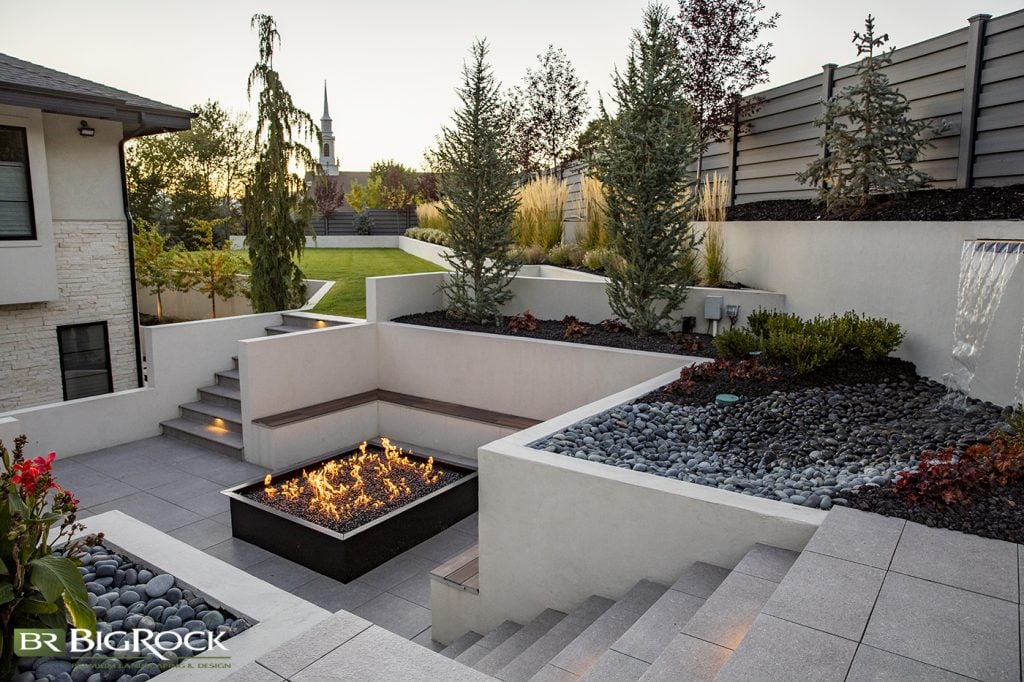Landscape Lighting Installer Strategies for Creating Stunning Evening Lighting Effects
Wiki Article
Discovering Different Kinds of Landscaping to Boost Your Outdoor Setting
Landscaping plays an important function in specifying exterior rooms. Various styles, from traditional yards to contemporary minimalist styles, use distinctive benefits for enhancing looks and feature. Including elements like xeriscaping and native plants can add to environmental equilibrium. Understanding the interaction of hardscape and softscape is important for producing welcoming atmospheres. The selections readily available can be frustrating, prompting one to review which style finest lines up with their vision for an exterior refuge.Conventional Garden Landscape Design

While many modern gardens accept minimalism and native plantings, typical garden landscaping stays a valued method that stresses balance, structure, and ornamental attributes. This style typically includes formal geometric formats, where paths, hedges, and flowerbeds are prepared with accuracy. Central prime focus, such as sculptures or water fountains, draw the eye and give a sense of harmony.Traditional landscape design regularly consists of a range of plant kinds, showcasing seasonal blooms and evergreen aspects. Timeless hedges, perennials, and annuals create dynamic colors and textures throughout the year. Additionally, trellises, pergolas, and arches include vertical passion and work as assistance for climbing up plants, enhancing the general aesthetic.The use all-natural products, such as stone and wood, more enriches the traditional landscape, adding to a classic high quality. Eventually, this design invites leisure and satisfaction, making it a precious selection for those looking for an attractive outside environment.
Modern Minimalist Landscaping
Modern minimalist landscaping stresses simplicity and functionality, characterized by open areas and tidy lines. Secret qualities include a limited plant scheme and thoughtful hardscape style that focuses on functionality and visual charm. Efficient plant choice approaches better enhance the minimal method, producing tranquil exterior environments that motivate relaxation and contemplation.Key Characteristics of Minimalism
An expanding fad in landscape design is the accept of minimalism, characterized by simplicity and performance. Minimalist landscape design concentrates on tidy lines, open rooms, and a limited color combination, promoting a feeling of serenity. Components are meticulously curated to stay clear of clutter, permitting each element to stick out. Using natural products, such as stone and timber, improves the organic feeling while preserving an aesthetic equilibrium. In addition, minimalist designs typically include geometric forms, which can produce aesthetic interest without frustrating the senses. Water attributes may be consisted of, working as centerpieces that enhance serenity. On the whole, minimalism in landscaping stresses the elegance of restraint, allowing nature's intrinsic top qualities to radiate through in an unified outside setting.Plant Selection Approaches
Effective plant choice is vital for achieving the wanted visual in contemporary minimal landscape design. The focus should get on simplicity, making use of a limited scheme of plants that complement each other and the surrounding setting. Native plants are often perfect, as they require much less upkeep and water, promoting sustainability. Picking types with differing heights and textures can include aesthetic rate of interest without overwhelming the space. Grouping plants in collections rather than spreading them improves cohesion and enhances the minimal style. Evergreen varieties can offer year-round structure, while seasonal flowers present refined shade modifications. Eventually, the goal is to produce a serene outdoor space that personifies peace and consistency via thoughtful plant options.Hardscape Layout Concepts
Vital components in hardscape layout substantially add to the overall looks and capability of minimal landscaping. This style method emphasizes tidy lines and understated products, producing an uncluttered visual experience. Secret elements consist of paths, patio areas, and preserving walls, which not only specify spaces however likewise improve ease of access and functionality. The usage of materials such as concrete, rock, and timber prevails, reflecting a natural yet modern-day aesthetic. Integrating geometric forms and in proportion designs better reinforces the minimal ideology, enabling a harmonious mix with bordering greenery. Furthermore, appropriate drain and disintegration control are vital considerations, ensuring durability and sustainability. Inevitably, effective hardscape style functions as a foundation that complements softscape aspects while maintaining equilibrium and simplicity in exterior atmospheres.
Cottage-Style Landscape design
Cottage-style landscape design provides a fascinating technique to producing welcoming outdoor areas. By including charming plant combinations, this design cultivates a feeling of warmth and fancifulness. The emphasis on cozy, distinct areas motivates relaxation and pleasure of nature.Lovely Plant Mixes
Although numerous property owners seek to develop a picturesque exterior room, achieving the beauty of cottage-style landscaping commonly depends upon thoughtful plant combinations. Vivid blooms, rich foliage, and aromatic natural herbs can be skillfully combined to stimulate a feeling of fancifulness and fond memories. Integrating lavender, daisies, and foxgloves produces a vivid tapestry that attracts pollinators while providing a wonderful fragrance. Incorporating ornamental yards like miscanthus can include texture and movement, matching the softer flowers. Additionally, blending seasonal and annual plants guarantees continual shade throughout the seasons. Using mountain climbers, such as clematis or honeysuckle, can improve vertical rate of interest. In general, these mixes not only improve the landscape however additionally cultivate a enchanting and welcoming ambience.
Cozy Outdoor Areas
Developing relaxing outdoor rooms needs a careful mix of convenience and beauty, enhancing the vibrant plant mixes located in cottage-style landscaping - Grill Islands. These locations often include welcoming seating arrangements, such as weather-beaten wooden benches or supported chairs surrounded by lush plant. Soft illumination, like fairy lights or lanterns, adds warmth, changing the room into a peaceful hideaway. Incorporating aspects such as trellises decorated with climbing roses or aromatic herbs enhances sensory experiences. Additionally, paths made of rustic stones welcome exploration and link with nature. Decorative touches like birdbaths or whimsical yard art contribute to a feeling of whimsy. Inevitably, the goal is to develop an enchanting ambience that encourages relaxation and pleasure of the elegance bordering these comfortable outside havensXeriscaping for Water Preservation
How can communities stabilize aesthetic landscape design with journalism requirement for water preservation? Xeriscaping arises as a practical remedy, advertising lasting techniques that minimize water use while boosting exterior elegance. This landscaping approach concentrates on making use of drought-resistant plants native to the area, which require substantially less water than conventional yards. By including compost and efficient irrigation systems, xeriscaping decreases dissipation and drainage, additional saving priceless water resources.Communities can create visually attractive landscapes through careful planning, picking a varied array of structures and colors that prosper in arid problems. Additionally, xeriscaping encourages the use of ornamental rocks and attractive gravel, supplying attractive and useful options to lawn yards. As neighborhoods embrace this eco-friendly method, they not just decrease their water consumption but also promote biodiversity and durability in their regional ecosystems. Ultimately, xeriscaping functions as a demo of the consistency between aesthetic charm and ecological obligation.Hardscape Style Components
Hardscape design aspects play a necessary function in boosting outdoor spaces by offering structure and functionality. These non-plant features, such as patios, walls, sidewalks, and decks, create aesthetic rate of interest click site while serving functional functions. Utilizing products like brick, rock, and concrete, hardscaping contributes to the overall visual appeal and resilience of a landscape.Incorporating hardscape components can define locations within a backyard, leading motion and encouraging social communication. As an example, a well-placed pathway can attach different sections of the garden, while keeping wall surfaces can handle elevation adjustments and prevent erosion.Furthermore, hardscape layout can boost access and security, giving stable surfaces for walking or lounging. Reliable integration of hardscape elements matches soft landscape design, guaranteeing a well balanced outside setting. Inevitably, thoughtful hardscape style boosts not just the charm of exterior rooms yet likewise their use, making them more inviting and useful for visitors and property owners alike.Exterior Living Rooms
While outdoor home use a seamless mix of comfort and nature, they serve as vital expansions of a home, improving lifestyle and leisure. These areas can include outdoor patios, decks, or exterior kitchens, designed to cultivate leisure and amusement. Outdoor Lighting Installer. By integrating useful furniture and stylish decoration, home owners create inviting ambiences for celebrations or silent evenings.The integration of color frameworks, such as awnings or pergolas, protects against the components while preserving an open feel. Fire pits and exterior heaters extend usability right into cooler months, supplying heat and setting. In addition, including lighting functions enhances the room's functionality after sunset, developing a magical night atmosphere.Landscaping elements, such as boundaries and pathways, better define these areas, directing motion and including aesthetic allure. Eventually, outside space transform yards right into functional resorts, promoting a way of living that welcomes both nature and comfortIndigenous Plant Landscape Design
Indigenous plant landscape design emphasizes the usage of aboriginal vegetation to produce sustainable and harmonious outside environments. This approach not only boosts biodiversity but also conserves water and lowers the requirement for chemical plant foods and pesticides. By choosing plants that are belonging to a particular region, homeowners can guarantee that their landscapes are well-adapted to regional soil and environment problems, leading to lower upkeep requirements.Additionally, indigenous plants supply essential habitats for local wildlife, including birds, butterflies, and bees, advertising environmental health. Landscape makes that include these plants usually include naturalistic designs that imitate regional communities, promoting a local color and link to the environment.Furthermore, indigenous plant landscape design can add to dirt security and disintegration control, making it an ecologically accountable selection. Overall, this practice not only improves exterior spaces but likewise supports the regional ecosystem, developing a lasting equilibrium in between human task and nature.
Frequently Asked Concerns
Just How Can I Select the Right Landscaping Design for My Home?
Choosing the ideal landscape design style for a home includes evaluating the home's style, climate, and individual preferences. Grill Islands. Investigating numerous styles and seeking advice from professionals can supply advice to create an unified outside space tailored to specific needsWhat Is the Average Cost of Expert Landscaping Providers?
The ordinary expense of professional landscape design services typically ranges from $1,000 to $5,000, depending on job area, complexity, look at these guys and dimension. Property owners ought to think about getting numerous quotes to guarantee they obtain fair pricing and quality service.Exactly how Usually Should I Maintain My Landscaped Lawn?
The frequency of keeping a landscaped yard normally relies on the functions and plants existing. Generally, regular maintenance every few weeks is encouraged, with seasonal tasks raising in regularity during height growing seasons for optimal health and wellness and aesthetics.Exist Landscaping Choices for Tiny Urban Spaces?

Different landscape design alternatives exist for little urban areas, consisting of vertical yards, container plants, and rooftop yards. Incorporating these components can optimize restricted locations while offering plant, boosting aesthetic appeals, and boosting air high quality in metropolitan settings.
What Plants Are Finest for Drawing In Local Wild Animals?
The finest plants for bring in neighborhood wild animals consist of native blooming species, berry-producing shrubs, and varied grasses. These plants supply crucial food and habitat, promoting a flourishing ecosystem that supports different birds, pests, and small animals. Numerous home owners seek to develop an attractive outdoor space, accomplishing the charm of cottage-style landscape design frequently pivots on thoughtful plant mixes. Producing comfy exterior areas needs a mindful mix of comfort and beauty, complementing the dynamic plant combinations found in cottage-style landscape design. Indigenous plant landscape design stresses the usage of aboriginal flora to create sustainable and harmonious exterior settings. Landscape makes that integrate these plants commonly feature naturalistic designs that imitate neighborhood ecological communities, fostering a sense of location and link to the environment.Furthermore, native plant landscape design can contribute to soil stability and erosion control, making it an ecologically liable option. find more info Different landscaping choices exist for tiny city rooms, consisting of upright yards, container plants, and rooftop yards.Report this wiki page